The North Lincoln County Historical Museum in Lincoln City, Oregon has two floors of displays relating to local history. The region was originally the homeland for the Siletz Indians and the museum has a small display of American Indian beadwork and other artifacts.
The Confederated Tribes of Siletz was formed by the tribes which had been removed to the Coast or Siletz Indian Reservation in the nineteenth century. The Coast Reservation was established in 1855 by executive order of President Franklin Pierce. The new reservation ran approximately 102 miles north and south along the Central Oregon coast. The establishment of this reservation set in motion the relocation of several different American Indian groups in Southern Oregon and Northern California. Sandy Nestor, in Our Native American Legacy: Northwest Towns With Indian Names, reports:
“The Indians were told they would be provided for, and had to leave all their belongings behind. When they arrived at the Siletz Reservation, all they found were empty promises, because nothing was there for them.”
With regard to language, in Siletz: Survival for an Artifact, Leone Kasner writes:
“Aboriginal natives of the Siletz river basin had been a Salish-speaking sub-branch of the Tillamook who were acknowledged as the southernmost of the coastal Salishan Indians. The sub-dialect used in the area has been named after the river on which they lived.”
However, under the removal policies of the American government which did not see any cultural or linguistic differences among Indian tribes, the tribes which came to call the Coast Reservation home spoke many different languages. Leone Kasner writes:
“The basketweavers of Siletz were people of many languages: Salishan, Chinook, Shahaptian, Yakonan, Kusan, Athbascan, Takelman, Lutuamian, Kalapooian and Algonquin..and some as yet not satisfactorily identified.”
Shown below is some of the Siletz beadwork and other artifacts which are on display in the North Lincoln County Museum.
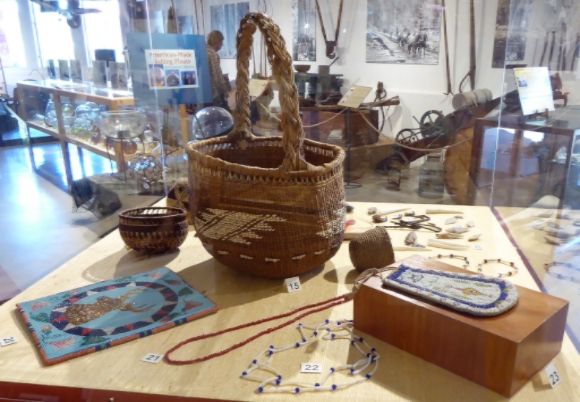
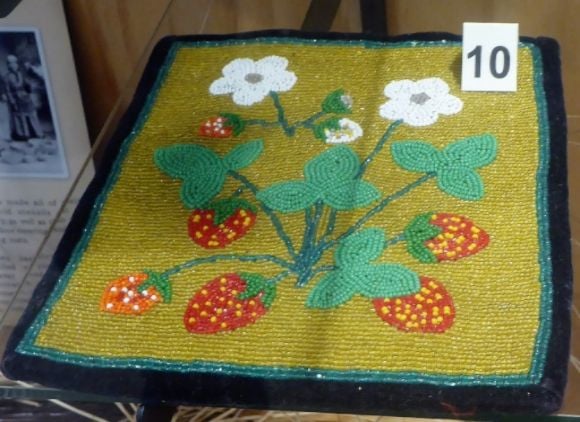 Shown above is a beaded purse
Shown above is a beaded purse  Shown above is a beaded purse of possible Warm Springs origin
Shown above is a beaded purse of possible Warm Springs origin 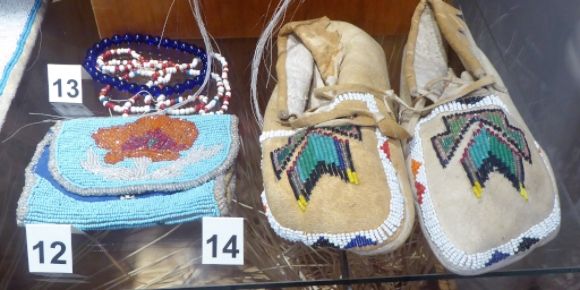 Shown above are: (12) a beaded purse, (13) a blue bracelet, and (14) a pair of beaded moccasins.
Shown above are: (12) a beaded purse, (13) a blue bracelet, and (14) a pair of beaded moccasins. 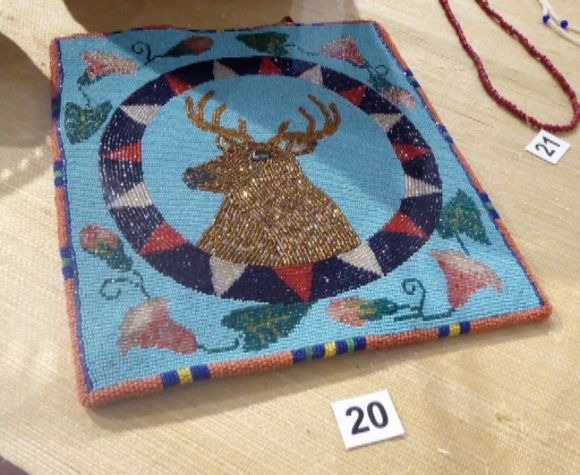 Shown above is a beaded buckskin bag.
Shown above is a beaded buckskin bag. 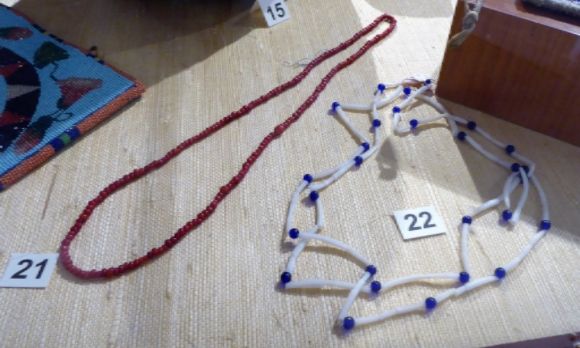 Shown above are two beaded necklaces.
Shown above are two beaded necklaces. 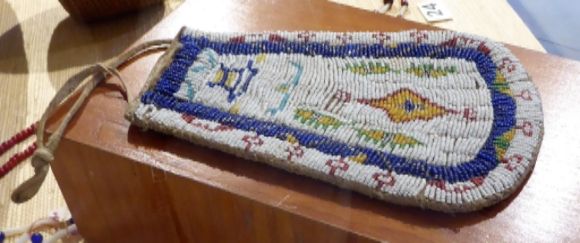 Shown above is a beaded bag.
Shown above is a beaded bag. 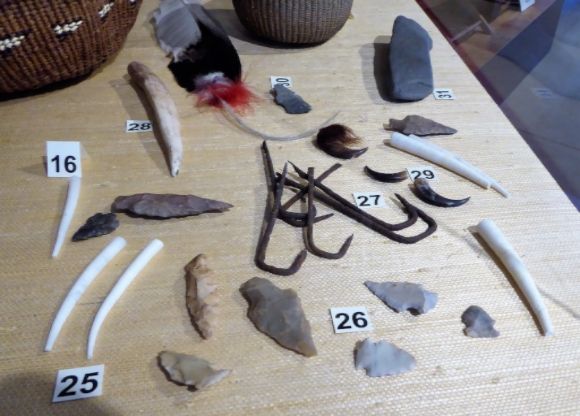 Shown above are some artifacts
Shown above are some artifacts 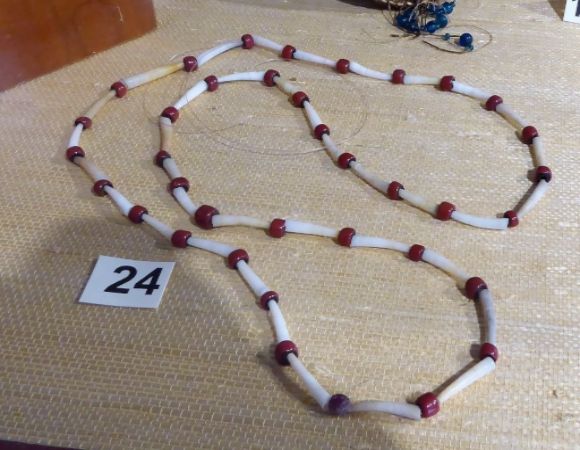 Shown above is a beaded necklace.
Shown above is a beaded necklace.
The slender, white, tusk-shaped shells used as beads are dentalium, which is harvested on the west side of Vancouver Island in present-day British Columbia and which were traditionally traded along the coast. Strings of dentalium often functioned as a kind of money. In his book The Indians of Yaquina Bay, E. Wayne Courtney reports:
“A rich man’s daughter tied dentalia in her hair to signify wealth. Clusters of the valued shell were also worn in the ears.”
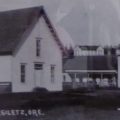
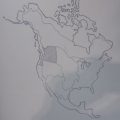
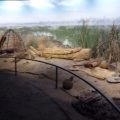
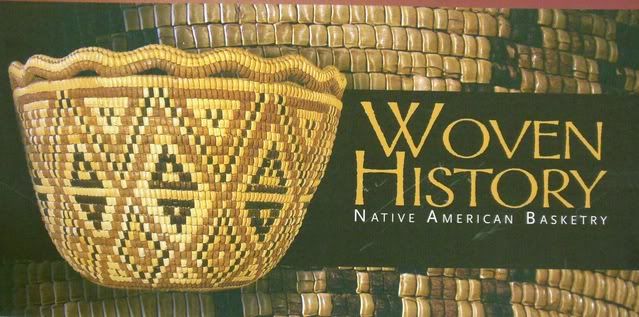
Leave a Reply